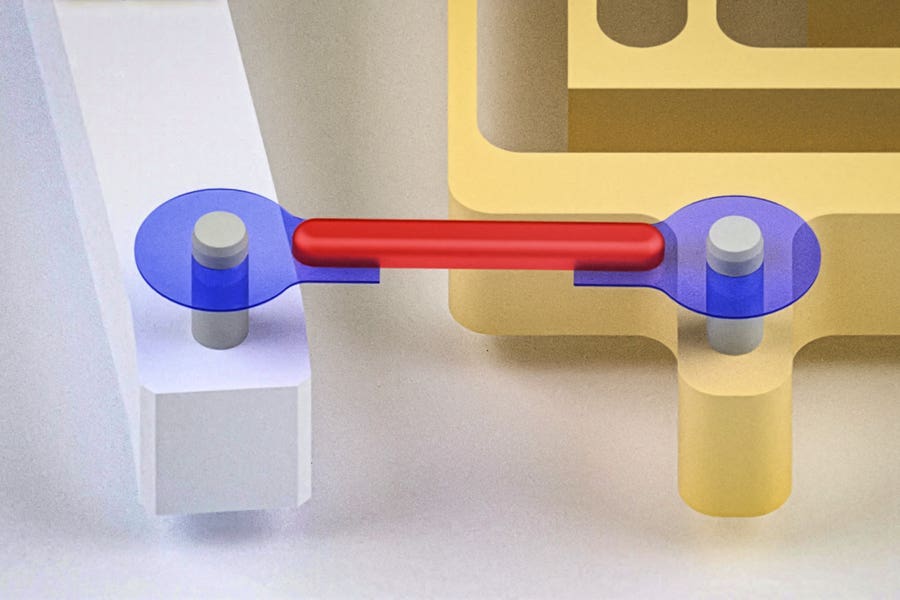Rare genetic mutation allows woman to live virtually pain-free, heal more rapidly
Over-prescription of opioid-based drugs to treat pain has contributed to an epidemic that is causing significant morbidity and mortality.

[May 30, 2023: Michael Lucibella, University College London]
Rare gene allows Jo Cameron to feel virtually no pain and never feel anxious or afraid. (CREDIT: Creative Commons)
Millions of people worldwide are living in chronic pain. To compound the problem, the over-prescription of opioid-based drugs to treat pain has contributed to an opioid epidemic that is causing significant morbidity and mortality, particularly in the USA. In the UK, chronic pain affects up to 50% of adults and about 12% of those have moderate-to-severe disabling pain.
This has been further aggravated by the Covid-19 pandemic with up to 2 million people in the UK experiencing ‘long Covid’ symptoms that include pain, depression and anxiety. Poorly treated chronic pain therefore makes life intolerable for extreme numbers of people and new pain-killing medications are hence urgently needed. One way to identify novel analgesic strategies is to understand the biological dysfunctions that lead to human inherited pain insensitivity disorders.
The study, published in Brain, follows up the team’s discovery in 2019 of the FAAH-OUT gene and the rare mutations that cause Jo Cameron to feel virtually no pain and never feel anxious or afraid.
The new research describes how the mutation in FAAH-OUT ‘turns down’ FAAH gene expression, as well as the knock-on effects on other molecular pathways linked to wound healing and mood. It is hoped the findings will lead to new drug targets and open up new avenues of research in these areas.
Jo, who lives in Scotland, was first referred to pain geneticists at UCL in 2013, after her doctor noticed that she experienced no pain after major surgeries on her hip and hand. After six years of searching, they identified a new gene that they named FAAH-OUT, which contained a rare genetic mutation. In combination with another, more common mutation in FAAH, it was found to be the cause of Jo’s unique characteristics.
Related Stories
The area of the genome containing FAAH-OUT had previously been assumed to be ‘junk’ DNA that had no function, but it was found to mediate the expression of FAAH, a gene that is part of the endocannabinoid system and that is well-known for its involvement in pain, mood and memory.
‘Junk’ DNA describes regions of the genome or non-coding genes that don’t create proteins. They were once thought redundant, but in recent years researchers have begun to discover the role of ‘dark’ regions of the genome in regulating coding genes.
In this study, the team from UCL sought to understand how FAAH-OUT works at a molecular level, the first step towards being able to take advantage of this unique biology for applications like drug discovery.
Gene editing mimicking the FAAH-OUT microdeletion reduces FAAH expression. (CREDIT: Brain)
This included a range of approaches, such as CRISPR-Cas9 experiments on cell lines to mimic the effect of the mutation on other genes, as well as analysing the expression of genes to see which were active in molecular pathways involved with pain, mood and healing.
The team observed that FAAH-OUT regulates the expression of FAAH. When it is significantly turned down as a result of the mutation carried by Jo Cameron, FAAH enzyme activity levels are significantly reduced.
FAAH and FAAH-OUT RNA expression levels and localization in human cerebral cortex cells. Cuts of fresh frozen cerebral cortex sections (7–10 μM thick) were analysed by RNAscope assay. (CREDIT: Brain)
Dr Andrei Okorokov (UCL Medicine), a senior author of the study, said: “The FAAH-OUT gene is just one small corner of a vast continent, which this study has begun to map. As well as the molecular basis for painlessness, these explorations have identified molecular pathways affecting wound healing and mood, all influenced by the FAAH-OUT mutation. As scientists it is our duty to explore and I think these findings will have important implications for areas of research such as wound healing, depression and more.”
The authors looked at fibroblasts taken from patients to study the effects of the FAAH-OUT-FAAH axis on other molecular pathways. While the mutations that Jo Cameron carries turn down FAAH, they also found a further 797 genes that were turned up and 348 that were turned down. This included alterations to the WNT pathway that is associated with wound healing, with increased activity in the WNT16 gene that has been previously linked to bone regeneration.
FAAH and FAAH-OUT RNA expression levels and localization in human cerebellum cells. Fresh frozen cortex sections (7–10 μM thick cuts) were analysed by RNAscope assay. (CREDIT: Brain)
Two other key genes that were altered were BDNF, which has previously been linked to mood regulation and ACKR3, which helps to regulate opioid levels. These gene changes may contribute to Jo Cameron’s low anxiety, fear and pain.
Professor James Cox (UCL Medicine), a senior author of the study, said: “The initial discovery of the genetic root of Jo Cameron’s unique phenotype was a eureka moment and hugely exciting, but these current findings are where things really start to get interesting. By understanding precisely what is happening at a molecular level, we can start to understand the biology involved and that opens up possibilities for drug discovery that could one day have far-reaching positive impacts for patients.”
This research was supported by the Medical Research Council (MRC) and Wellcome.
Note: Materials provided above by University College London. Content may be edited for style and length.
Like these kind of feel good stories? Get the Brighter Side of News' newsletter.



